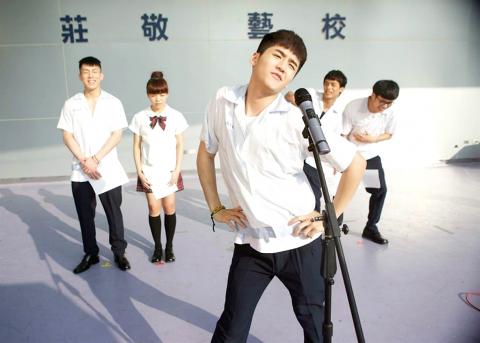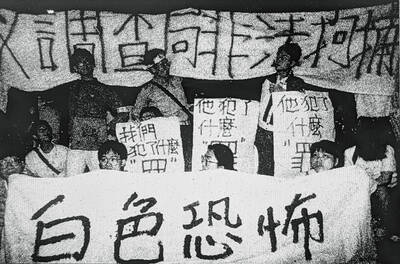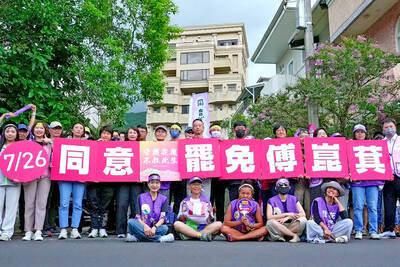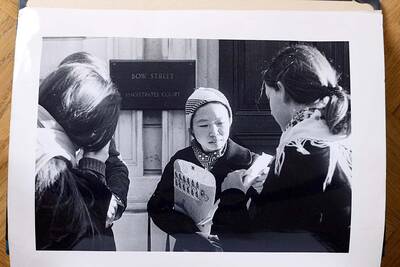Although Battle of Hip Hopera (終極舞班) showed all signs of being another one of those teen movies about chasing your dreams with cliched lines like “I’m going to keep dancing no matter what because it’s the only thing I know how to do,” the main premise of the movie was remotely promising: the combination of hip-hop dance battles and Peking opera.
Unfortunately, the infusion of traditional arts into modern youth culture is just a gimmick; a lazy excuse to make another sappy, over the top, unrealistically dramatic and painfully shallow teen flick. Even how it all begins is lazy — the four teenaged protagonists, members of a high school hip-hop dance group, need a secret place to practice and end up at a Peking opera theater run by the family of one of their classmates.
The owners immediately resent the young kids, even threatening them with a sword, but magically in the next scene they become friendly, with one of the main opera actors jumping into the fray, mimicking the hip-hop moves using his own craft.

Photo courtesy of atmovies.com
“Oh, let’s combine Peking opera and hip-hop!” the group leader exclaims upon seeing this, and that’s as far as it goes. There are no details about how the group works Peking opera techniques into their moves, and if you are not familiar with hip-hop or Peking opera, you are likely not able to tell that they actually combined the two during their subsequent competitions.
Instead of explaining the process, the filmmakers decide to utilize more superficial gimmicks — giving the team flashy Peking opera-style costumes, having the protagonist look really cool practicing topless with face paint and a staff, and so on. It’s style over substance all the way.
The aforementioned choppy storytelling with no transitions or much explanation continues throughout the entire film, making a simple film much more confusing than it really needs to be. Suddenly, two characters are dating — and even then it is not apparent until much later. In one scene, the group is in the midst of a battle and suddenly it cuts to the next day, and the audience does not know that they won until about five minutes later. A shy and sheltered Peking opera disciple transforms into a bold and sexy hip-hop dancer overnight. One main character suddenly disappears and then reappears out of the blue toward the end of the film. We don’t even really know who won the final battle.
The acting is also terrible. The dialogue is already juvenile and trite enough, and what makes matters worse is that most of the actors can’t even pronounce their words properly. The first three minutes of the movie, featuring a dramatic dance battle in a scrap car yard, shows no signs of it being a bad movie. But once the characters open their mouths, it’s all over.
Group leader Ailing’s (Koe Yeet, 高藝) funny Chinese can be explained by the fact that she’s from Malaysia, and in the film she’s an exchange student from Singapore — but pronunciation aside, her delivery is awkward. There is no excuse for team member Fanli (Jack Hsu, 許凱皓), who is apparently unable to even speak a sentence naturally, garbling his words. Maybe this is the way teenagers talk nowadays, who knows. The worst is protagonist Hsiang (Chu Xiaoxiang, 儲曉祥), Chinese-born member of Korean boy band Cross Gene. His character is moody and unlikeable, with the same squinty-eyed, pained expression for the entire movie. Most of his lines are angry outbursts, and, like everyone else he delivers them unnaturally.
You hope for someone remotely talented to appear and redeem the film just for a little bit — but there is not one single thespian who brings a convincing performance except for maybe (and just maybe) Kamiyama Hiroki, who plays Hsiang’s dance mentor Old K. Yes, all major Taiwanese productions these days have to include actors from all over Asia, whether it makes sense or not.
In all, the glossy production, exciting dance moves, attractive cast and intriguing premise simply cannot combat poor storytelling, atrocious editing and very bad acting. It’s hard to understand why this film was selected as the closing film for this year’s Golden Harvest Awards.

From the last quarter of 2001, research shows that real housing prices nearly tripled (before a 2012 law to enforce housing price registration, researchers tracked a few large real estate firms to estimate housing price behavior). Incomes have not kept pace, though this has not yet led to defaults. Instead, an increasing chunk of household income goes to mortgage payments. This suggests that even if incomes grow, the mortgage squeeze will still make voters feel like their paychecks won’t stretch to cover expenses. The housing price rises in the last two decades are now driving higher rents. The rental market

July 21 to July 27 If the “Taiwan Independence Association” (TIA) incident had happened four years earlier, it probably wouldn’t have caused much of an uproar. But the arrest of four young suspected independence activists in the early hours of May 9, 1991, sparked outrage, with many denouncing it as a return to the White Terror — a time when anyone could be detained for suspected seditious activity. Not only had martial law been lifted in 1987, just days earlier on May 1, the government had abolished the Temporary Provisions Effective During the Period of National Mobilization for Suppression of the Communist

Hualien lawmaker Fu Kun-chi (傅?萁) is the prime target of the recall campaigns. They want to bring him and everything he represents crashing down. This is an existential test for Fu and a critical symbolic test for the campaigners. It is also a crucial test for both the Chinese Nationalist Party (KMT) and a personal one for party Chairman Eric Chu (朱立倫). Why is Fu such a lightning rod? LOCAL LORD At the dawn of the 2020s, Fu, running as an independent candidate, beat incumbent Democratic Progressive Party (DPP) lawmaker Hsiao Bi-khim (蕭美琴) and a KMT candidate to return to the legislature representing

Fifty-five years ago, a .25-caliber Beretta fired in the revolving door of New York’s Plaza Hotel set Taiwan on an unexpected path to democracy. As Chinese military incursions intensify today, a new documentary, When the Spring Rain Falls (春雨424), revisits that 1970 assassination attempt on then-vice premier Chiang Ching-kuo (蔣經國). Director Sylvia Feng (馮賢賢) raises the question Taiwan faces under existential threat: “How do we safeguard our fragile democracy and precious freedom?” ASSASSINATION After its retreat to Taiwan in 1949, the Chinese Nationalist Party (KMT) regime under Chiang Kai-shek (蔣介石) imposed a ruthless military rule, crushing democratic aspirations and kidnapping dissidents from